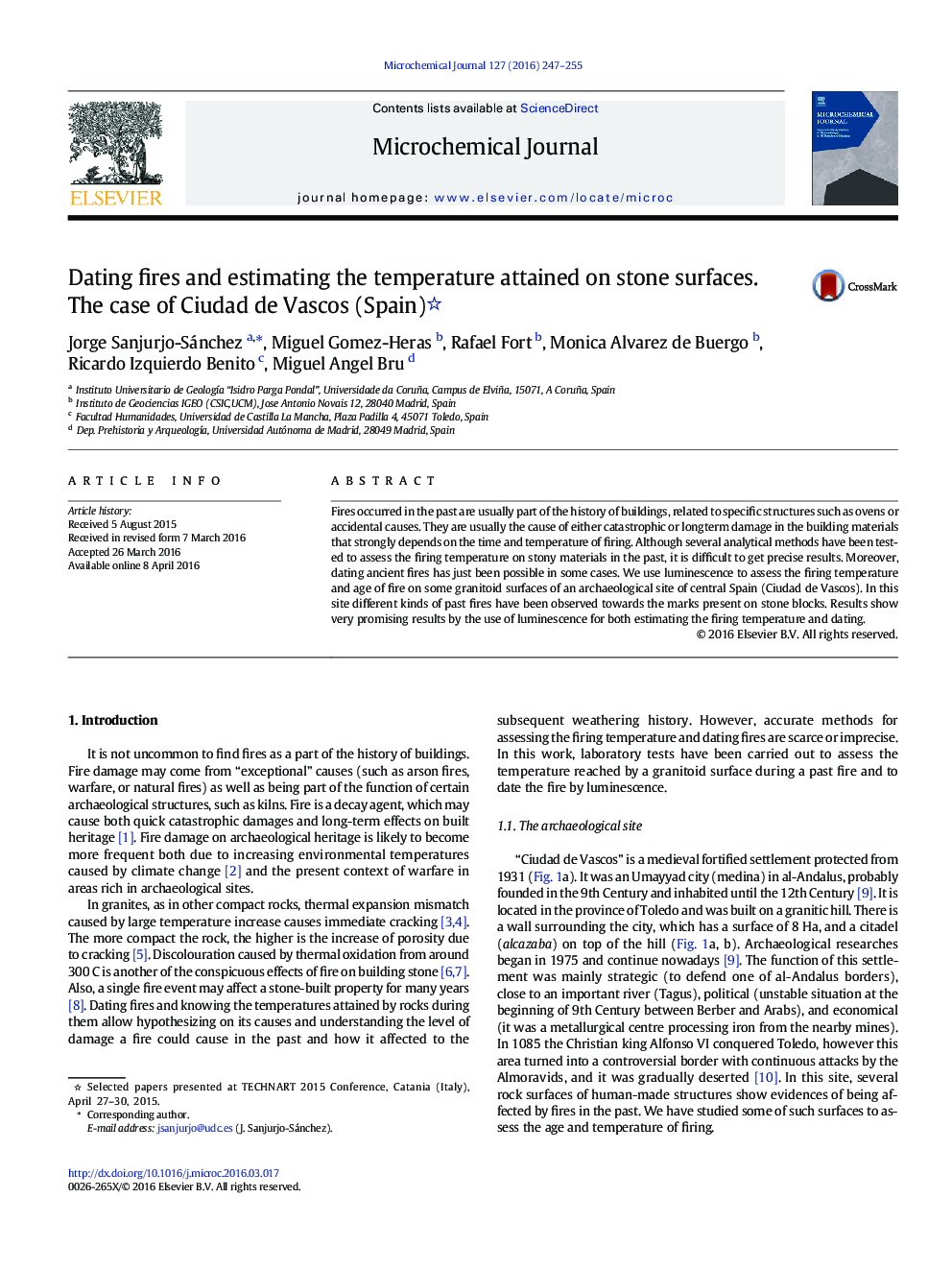| Article ID | Journal | Published Year | Pages | File Type |
|---|---|---|---|---|
| 1227527 | Microchemical Journal | 2016 | 9 Pages |
•Fires causes severe damage on historical buildings•Luminescence analyses were used to assess the maximum temperature of fired granitoid surfaces•Results provide maximum temperatures consistent with petrological observations•Luminescence can be a promising analytical tool to assess the temperature attained by several kinds of fires
Fires occurred in the past are usually part of the history of buildings, related to specific structures such as ovens or accidental causes. They are usually the cause of either catastrophic or longterm damage in the building materials that strongly depends on the time and temperature of firing. Although several analytical methods have been tested to assess the firing temperature on stony materials in the past, it is difficult to get precise results. Moreover, dating ancient fires has just been possible in some cases. We use luminescence to assess the firing temperature and age of fire on some granitoid surfaces of an archaeological site of central Spain (Ciudad de Vascos). In this site different kinds of past fires have been observed towards the marks present on stone blocks. Results show very promising results by the use of luminescence for both estimating the firing temperature and dating.
